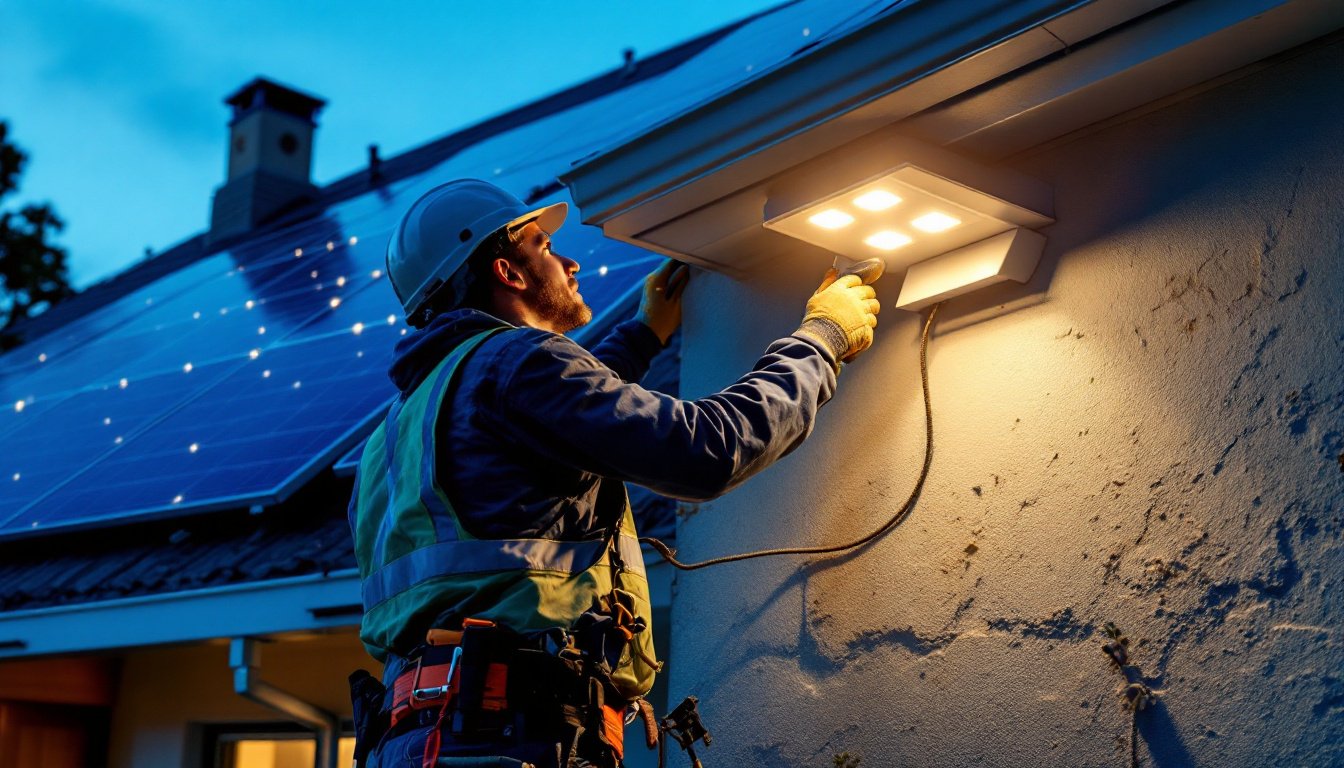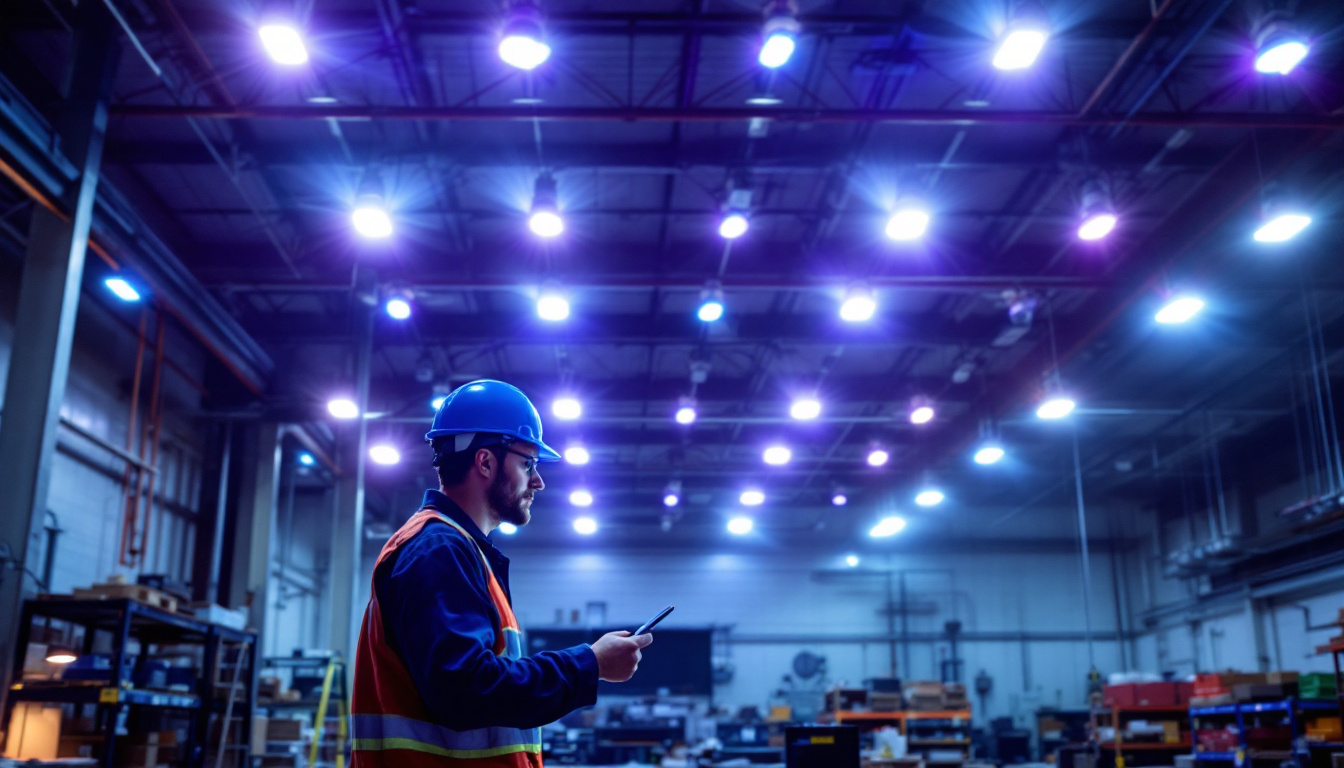

The lighting industry is undergoing a significant transformation, driven by advancements in technology and a growing emphasis on sustainability. For lighting contractors, understanding the integration of LED and solar technologies is not just beneficial; it’s essential for staying competitive in a rapidly evolving market. This article delves into the top strategies that lighting contractors can adopt to effectively incorporate LED and solar solutions into their projects.
LED (Light Emitting Diode) technology has revolutionized the way lighting is designed and implemented. Unlike traditional lighting solutions, LEDs offer numerous advantages in terms of energy efficiency, longevity, and versatility.
One of the most compelling reasons to adopt LED technology is its energy efficiency. LEDs consume significantly less power compared to incandescent and fluorescent lights, which translates to lower energy bills for clients. For contractors, this means being able to offer a product that not only meets lighting needs but also aligns with clients’ goals for sustainability and cost reduction.
Moreover, the long lifespan of LEDs—often exceeding 25,000 hours—means less frequent replacements. This longevity reduces maintenance costs and enhances client satisfaction, making it a win-win situation for both contractors and their customers. In fact, studies have shown that switching to LED lighting can reduce energy consumption by up to 80%, which is a substantial figure for both residential and commercial properties. This significant reduction in energy use not only benefits the environment by lowering carbon footprints but also contributes to a more sustainable future.
LEDs come in a vast array of shapes, sizes, and colors, allowing for creative flexibility in design. This versatility enables contractors to tailor lighting solutions to meet specific aesthetic and functional requirements. Whether it’s for residential spaces, commercial properties, or outdoor settings, LED technology can adapt to various applications.
Additionally, the ability to control brightness and color temperature with LED fixtures allows contractors to create dynamic lighting environments. This feature is particularly appealing in settings such as restaurants, retail spaces, and event venues where ambiance plays a crucial role. For instance, in a restaurant, the lighting can be adjusted to create a warm and inviting atmosphere during dinner hours, while brightening up for lunch service to enhance visibility. Furthermore, advancements in smart LED technology now allow for integration with home automation systems, enabling users to control their lighting via smartphones or voice commands, adding another layer of convenience and customization.
As the world shifts towards renewable energy sources, solar technology has gained traction in the lighting industry. Solar-powered lighting solutions offer a sustainable alternative that can significantly reduce reliance on traditional power sources.
solar lighting systems harness energy from the sun, making them an eco-friendly option for various applications. They are particularly useful in areas where access to electricity is limited or where trenching for electrical lines would be cost-prohibitive. By utilizing solar technology, contractors can provide clients with a reliable lighting solution that is both sustainable and cost-effective.
Moreover, solar lights often come equipped with LED fixtures, combining the benefits of both technologies. The result is a lighting solution that is not only energy-efficient but also capable of operating independently of the grid, which can be a significant selling point for contractors. Additionally, many solar lighting systems now feature smart technology, allowing for motion sensors and adjustable brightness settings. This enhances both security and energy efficiency, as lights can automatically turn on or adjust based on surrounding conditions, further reducing energy waste and operational costs.
When integrating solar lighting into projects, thorough site assessments are crucial. Contractors must evaluate factors such as sunlight exposure, shading from nearby structures, and geographic location to determine the feasibility of solar solutions. Understanding these elements allows for optimal placement and ensures that solar lights will perform effectively throughout the year.
Additionally, contractors should consider the aesthetic aspects of solar lighting. With advancements in design, solar fixtures are available in various styles that can complement the overall look of a property. This attention to detail can enhance the appeal of the installation and contribute to client satisfaction. Furthermore, the integration of solar lighting can also lead to increased property values, as more homeowners and businesses seek eco-friendly features that align with sustainable living practices. By showcasing the long-term benefits of solar lighting, contractors can position themselves as leaders in the green building movement, attracting clients who prioritize environmental responsibility.
The synergy between LED and solar technologies presents a unique opportunity for lighting contractors. By combining these two innovations, contractors can offer clients cutting-edge solutions that enhance both functionality and sustainability.
One of the primary advantages of integrating LED and solar technologies is energy independence. Solar-powered LED lights can operate without being connected to the grid, making them an ideal choice for remote locations or areas prone to power outages. This reliability can be a significant selling point for clients looking for consistent lighting solutions.
Furthermore, the combination of these technologies can lead to substantial energy savings. By utilizing solar energy to power LED fixtures, clients can drastically reduce their electricity consumption and associated costs. This aspect is particularly appealing for businesses looking to improve their bottom line while also committing to sustainability.
Contractors can explore various innovative applications by combining LED and solar technologies. For instance, solar-powered streetlights equipped with LED fixtures can illuminate public spaces while minimizing energy costs for municipalities. Similarly, solar garden lights can enhance residential landscapes while providing a sustainable lighting solution.
Additionally, smart solar LED lights equipped with sensors can adjust brightness based on ambient light levels or motion detection. This feature not only conserves energy but also enhances security in outdoor settings, making it a compelling option for both residential and commercial projects.
To successfully promote LED and solar lighting solutions, contractors must adopt effective marketing strategies that highlight the benefits of these technologies. Understanding the target audience and tailoring messages accordingly can significantly impact the success of marketing efforts.
One of the most effective ways to market LED and solar solutions is through education. Many clients may not fully understand the advantages of these technologies, so providing clear and concise information can help bridge that gap. This can be achieved through workshops, webinars, or informational brochures that outline the benefits of energy efficiency, cost savings, and sustainability.
Additionally, showcasing case studies or testimonials from satisfied clients can provide social proof and build trust. Highlighting successful projects that utilized LED and solar technologies can demonstrate the tangible benefits and inspire potential clients to consider similar solutions.
In today’s digital age, leveraging online marketing channels is crucial for reaching potential clients. Contractors can utilize social media platforms, email marketing, and search engine optimization (SEO) to increase visibility and attract leads. Creating engaging content that highlights the advantages of LED and solar lighting can help establish authority in the industry and drive traffic to the contractor’s website.
Additionally, maintaining an active presence on platforms like Instagram and Pinterest, where visual content thrives, can showcase completed projects and inspire potential clients. High-quality images of installations can capture attention and encourage inquiries, making it an effective marketing strategy.
The lighting industry is constantly evolving, and staying informed about the latest trends is essential for contractors. By keeping abreast of technological advancements and market shifts, contractors can position themselves as leaders in the field.
Smart lighting technology is gaining popularity, offering enhanced control and efficiency. Integrating smart features into LED and solar lighting solutions can provide clients with greater convenience and customization. For instance, smart lighting systems can be controlled remotely via mobile apps, allowing users to adjust settings based on their preferences.
Contractors should explore partnerships with smart technology providers to offer comprehensive solutions that meet the growing demand for automation and connectivity in lighting. This approach not only enhances the value of the services offered but also attracts tech-savvy clients looking for modern solutions.
As environmental concerns continue to rise, emphasizing sustainability in marketing efforts can resonate with clients. Highlighting the eco-friendly aspects of LED and solar technologies can appeal to environmentally conscious consumers and businesses. Providing information on how these solutions contribute to reducing carbon footprints and energy consumption can enhance the contractor’s value proposition.
Furthermore, obtaining certifications or endorsements from recognized sustainability organizations can bolster credibility and demonstrate a commitment to environmentally responsible practices. This can differentiate contractors in a competitive market and attract clients who prioritize sustainability.
Incorporating LED and solar technologies into lighting projects presents a wealth of opportunities for contractors. By understanding the benefits of these innovations, adopting effective marketing strategies, and staying ahead of industry trends, lighting contractors can position themselves for success in a rapidly changing landscape. The future of lighting is bright, and those who embrace these advancements will undoubtedly lead the way.
Ultimately, the integration of LED and solar solutions not only enhances the quality and efficiency of lighting installations but also contributes to a more sustainable future. As the demand for energy-efficient and eco-friendly solutions continues to grow, lighting contractors who prioritize these technologies will find themselves at the forefront of the industry.
Ready to lead the way in the future of lighting with LED and solar technologies? At LumenWholesale, we provide lighting contractors like you with the highest quality, spec-grade lighting products at the most competitive wholesale prices. Say goodbye to local distributor markups and hello to a vast selection of reliable, high-performance lighting that meets the highest industry standards. With free shipping on bulk orders, you can stock up on premium lighting solutions without any hidden fees or compromises. Elevate your lighting projects and embrace sustainability with the perfect blend of quality, affordability, and convenience. Discover the value we offer by visiting Wholesale Lighting at the Best Value today.

Discover why LED shop lights are revolutionizing the lighting industry and what every contractor should know to stay ahead.

Discover essential tips for lighting contractors to seamlessly install high bay LED shop lights.

Discover why lighting contractors are turning to high bay LED lights with 30,000 lumens for superior illumination.

Discover essential insights into linear high bay lighting with our comprehensive guide tailored for lighting contractors.
Get notified when NEW deals are released.
Optimize your budget with wholesale discounts.
Only top-quality, specification-grade lighting products.
No additional costs at checkout - what you see is what you pay.
We understand the unique needs of contractors.